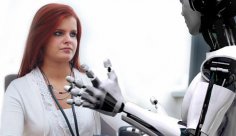
American homosexual men outperformed heterosexual men nearly twice as often as heterosexual men in educational attainment. Lesbians, on the other hand, were twice as likely as heterosexual women to drop out of college.
Large-scale sociological studies have, until recently, almost always ignored the question of sexual orientation: respondents were necessarily asked only about their gender. For this reason, scientists had no objective data on the presence or absence of significant differences in the lives of lesbian, gay and bisexual people from heterosexual people. An American scientist decided to fill this gap and found curious anomalies.
Questions about sexual orientation only appeared in the three largest U.S. home-based questionnaires in the late 2000s, under the administration of Barack Obama. Until then, lesbian, gay and bisexual (LGB) people were virtually invisible in large samples of statistics, making it impossible for sociologists to draw unequivocal conclusions about the extent of discrimination in different areas of life, the socialization of LGB people, and the demographics of American society as a whole.
Nevertheless, over the past decade or so national surveys in the United States have accumulated a fairly large body of data, already taking into account the sexual orientation of respondents. This allowed Joel Mittleman, an associate professor at the University of Notre Dame, to stumble upon an important result, demonstrating in passing the importance of considering the sexual orientation of the population.
He analyzed the archives of four questionnaires at once. To the three national surveys mentioned above – health status (NHIS), drug, alcohol and tobacco use (NSDUH), and population victimization assessment (NCVS) – Mittleman added data from the Longitudinal Study of Higher Education (HSLS), which since 2009 has included questions about sexual orientation.
The most highly educated category of Americans are homosexual males
The results of the analysis came as a big surprise to a sociologist familiar with known demographic trends. For example, since the middle of the 20th century, women have steadily “won back” from men in the academic sphere. Today, the ratio of girls to boys in American colleges is roughly 60/40. And women have, on average, higher academic achievement and are more likely than men to receive a college degree. But adding the factor of sexual orientation to the data changes the picture in an interesting way.
It turns out that the most highly educated category of Americans among all ethnic groups is still male, but homosexual. About 52 percent of them have a bachelor’s degree, which, compared to all adults in the country, seems even anomalous: In the United States as a whole, only 36 percent of the adult population has completed a bachelor’s degree. And if you look at the number of gay men with advanced degrees (6 percent of them have a J.D., M.D., or Ph.D.), their superiority over heterosexual men is two-fold (about 3 percent of them have advanced degrees).
Thus, if we consider homosexual men from the U.S. as a separate group of the world’s population, they are ahead even of the recognized leaders, the residents of Luxembourg: in this European country, “only” 46.6 percent of residents have completed a bachelor’s or master’s degree.
Nevertheless, sexual orientation, as it turned out, affects the academic success of people of different genders unequally. Lesbians, on the other hand, were twice as likely as heterosexual women to drop out of college.
Of the reasons for this state of affairs, Mittleman dares to make only cautious speculations. In his view, the superiority of homosexual men over heterosexuals in studies may be due to the overcompensation of social disapproval of their orientation.
The explicit and unspoken rules of life in an educational institution are easier to comply with than the ornate demands of society for a masculine role. And to earn encouragement and recognition from a teacher or mentor, it is enough to follow specific and clear ways. Whereas parental approval is probably impossible to earn at all if you are gay.
Why the opposite is true for women, and why homosexuality becomes a barrier to academic success, the researcher is not ready to say. In addition, the impact of bisexuality on education is not entirely clear. However, according to Mittleman, his work is an unprecedentedly detailed look at demographic issues not only through the lens of gender, but also of sexual orientation. He plans to delve deeper into this topic in his future research and hopes that his work will inspire colleagues to improve social research methodology.
The preprint of Mittleman’s research paper can be found on Cornell University’s SocArXiv website. The paper has already been peer-reviewed and will be published in the American Sociological Review.





